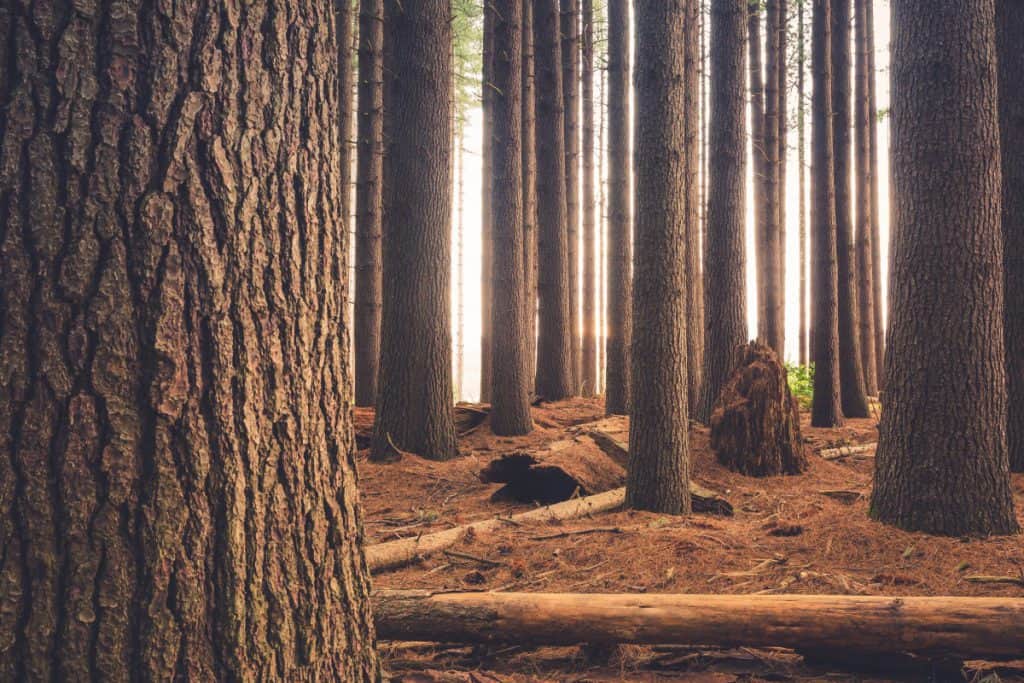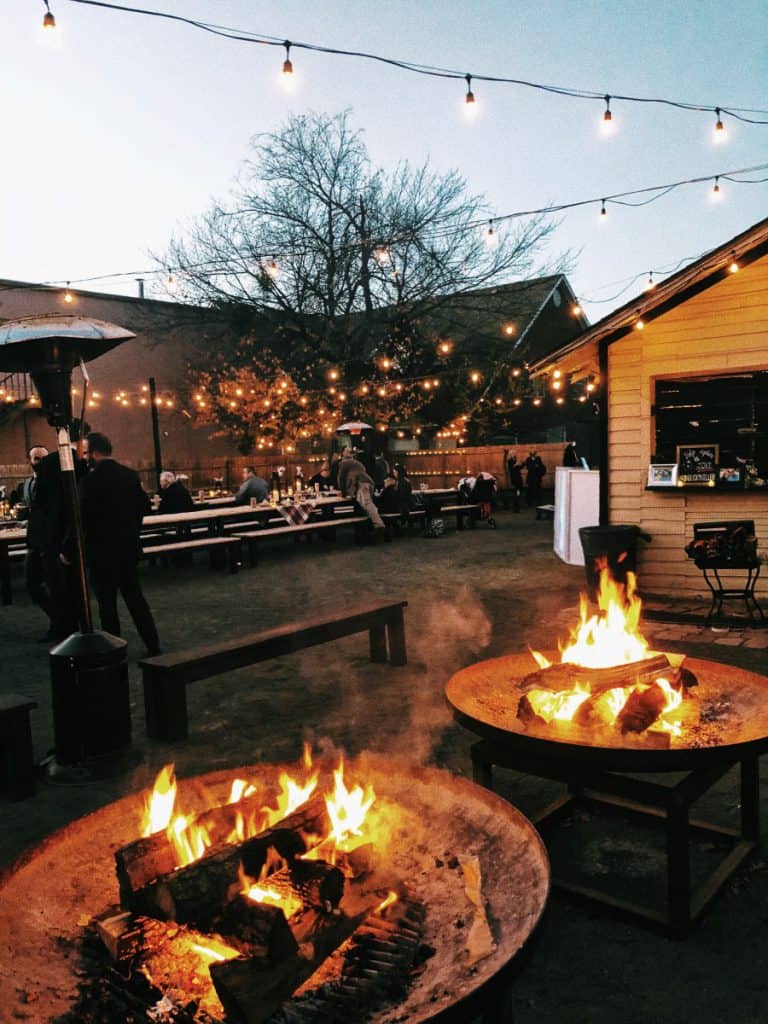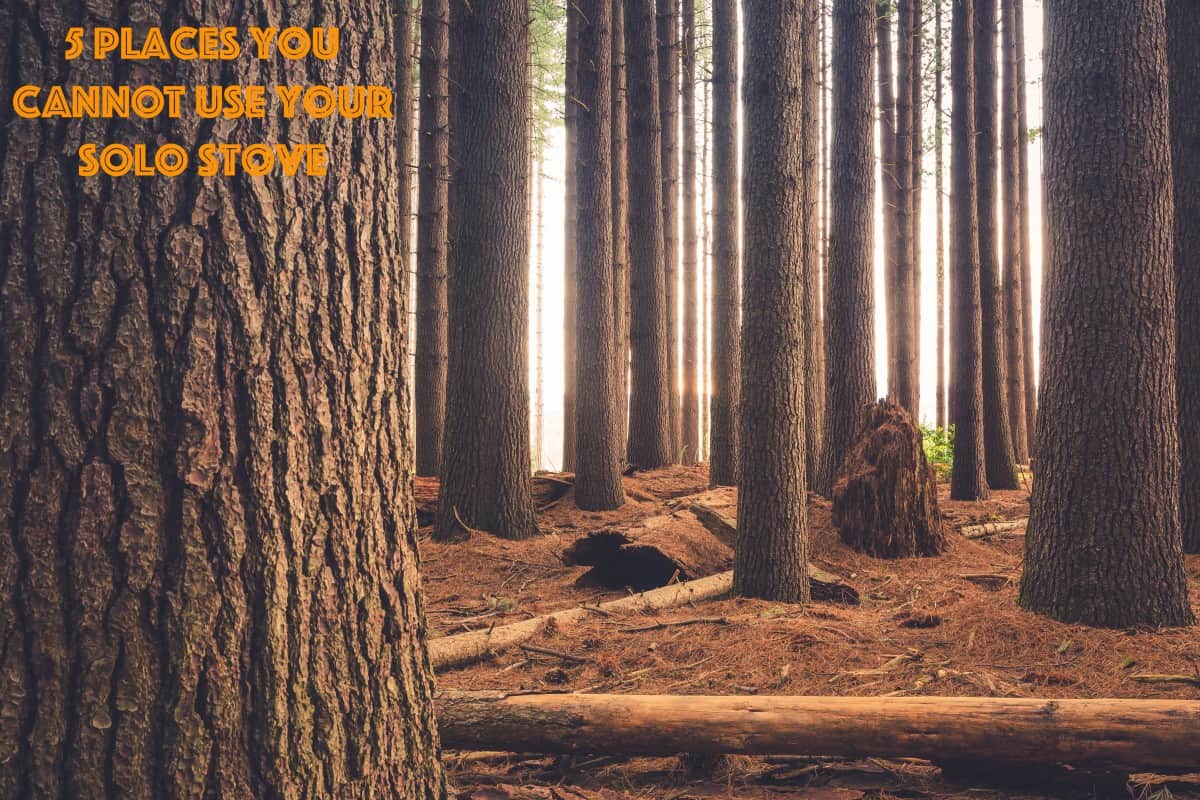Solo Stoves are fantastic pieces of kit and one of the best things about them is that they’re designed to go pretty much anywhere. They are light and portable, and you can easily stow one in your vehicle for camping weekends or longer trips. They’re also great in the backyard.
That said, however, there are places where Solo Stoves can’t be used, and we’re going to look into what those are today so you don’t get caught out. Most of these are to do with safety, so it’s really important to understand them before you go setting your stove up.

Remember that Solo Stoves are considered open flames, so it’s crucial to behave responsibly and treat them with respect. They are much more dangerous than the stove in your kitchen, and can easily cause injuries or even fatalities if they aren’t handled with care.
Always err on the side of caution and think about the conditions you’re lighting your stove in. If there’s a breeze, be more careful. If there’s a strong wind, don’t light the fire at all. If you aren’t sure the situation is safe, opt not to risk it.
It’s also a good idea to have access to some water for emergencies, but don’t use this as an excuse to behave irresponsibly.

Solo Stoves Are For Outdoor Use Only
Indoor spaces are the a major “no” when it comes to places where you should never be using a Solo Stove. It might seem like a great idea if you love your Solo Stove and you have hard flooring in your kitchen – why shouldn’t you just haul it in there and whip up some marshmallows or a quick dinner?
Quite simply, Solo Stoves are not designed to be used inside, and present serious risks if they are. Even if you purchase a stand which raises the Solo Stove up off the floor, you should not use them inside. Solo Stoves are considered open flames, and are definitely not safe for indoor use. They could easily set fire to the house.
This rule applies to all kinds of buildings; Solo Stoves are not to be used in garages, sheds, or any enclosed areas. Even if the building is not flammable, there are big issues.
For example, the fumes from the stove can accumulate and pose very serious health risks or even cause fatalities. You should only use these stoves – and others like them – in open areas where there is good ventilation.
Solo Stoves Shouldn’t Be Set Up On Flammable Surfaces
It’s really important to check what your Solo Stove is standing on, especially if you’re camping or in areas with lots of potential fuel. Remember how hot the stove is going to get, and think about what it’s in contact with.
If you’re camping or lighting your stove out in nature, make sure you clear the space where you’re going to stand your stove, and the nearby area. Solo Stove recommends getting rid of all nearby flammable materials, and stresses that anything highly flammable, such as gasoline, should not be stored anywhere near the stove.
You should think about how far a fire could potentially spread if the Solo Stove accidentally got overturned, and use this as a guide for how much you need to clear. Take into account how dry the ground and surrounding area is as well; wet ground doesn’t present such a big risk, but dry ground can catch fire very easily.
Err on the side of caution and move more material than you need to, maximizing the safety.
If you’re camping in an area with grass, moss, leaves, etc., consider building a couple of rings of stones around your stove. Clear away flammable material within the rings.
These stones will help you to ensure you have a good circle of safety around the stove, and will also serve as fire breaks if you do get sparks or anything else which could cause a fire.
“Practice good habits and always ensure the vicinity is clear of flammable and highly flammable materials before you light up your Solo Stove.“

Solo Stoves Should Be Kept Away From Buildings
Just as you don’t want your Solo Stove near flammable materials, you also don’t want it anywhere near buildings. Remember that if the wind picks up, flames could spread. You shouldn’t light a fire when it’s windy, but it’s still best to consider the possible effect wind could have if it began.
Solo Stove recommends that you make sure the stove is at least six feet away from the nearest building. Don’t be tempted to cheat on this; you don’t want a building going up in smoke under any circumstances. Measure six feet and always set up with room to spare. This will keep everyone safe.

Buildings include sheds and small structures as well as houses or garages. Many sheds are wood and will burn readily, so it’s important to include them in your calculations, and leave plenty of space. You should also consider any other garden structures such as compost bins, chicken houses, guinea pig hutches, raised beds, etc.
Vehicles come under this list too, which is particularly important to remember when you’re traveling. Because of the amount of heat stoves can give off, it’s important to keep them well away from vehicles and their fuel sources to prevent any potential accidents.
Solo Stoves Don’t Belong Beneath Low Overhangs
It’s easy to underestimate just how much heat rises, or how high flames can get once a fire is really underway. If you’re very focused on checking the immediate surroundings for potential problems, you might forget to look up – don’t.
Always check above your Solo Stove site just as carefully as you would check the vicinity and the base you’re setting it on. Think about which way the wind might blow the flames, and how big the fire is going to be. As always, it’s better to be safe than sorry, so be extra cautious.
Solo Stove recommends leaving up to 20 feet between the stove and any overhanging structure. This includes low branches, awnings, or patio overhangs. The fire will produce a lot of heat, and even if it doesn’t actually set fire to the overhang, it could cause a lot of damage to it.
Remember too that an overhanging structure will prevent the stove from ventilating as effectively, and could trap fumes down around the stove. If you’re sitting nearby, this is dangerous. It’s much better to let the fire’s output dissipate freely into the sky, without the interference of overhanging structures.

Don’t Use A Solo Stove On A Boat
It might seem like none of the above “can’t” rules apply to a boat; after all, a boat is in the open air, it has no overhangs, it’s outdoors, it isn’t very flammable, and it’s not a building in the usual sense of the word.
However, you definitely should not use a Solo Stove on a boat. Though the idea of toasting marshmallows or hot dogs over a fire while you cruise down the river might seem very appealing, this simply isn’t safe.
You may have a lot of water to hand to douse an accidental fire before it could get out of control, but you still should not use a Solo Stove on a boat. There are lots of reasons for this.
One is that the rocking of the boat could very easily knock the Solo Stove over, which would result in burning wood being spilled everywhere.
The Solo Stove is also likely to damage the surface of the boat; your deck might not be flammable, but it probably isn’t designed to be fireproof or heatproof either. Using your Solo Stove – even on a stand – could result in damage to the deck.
Combining the dangers of open fires with the dangers of sailing is not a good idea; if you want to cook on or heat your boat, look into stoves which are specifically designed for it, and follow their safety instructions.
This rule is true for all other recreational vehicles too; Solo Stoves should not be used on or in them. That includes the back of pick-up trucks or trailers; these are not suitable spaces for setting up your stove, and trying to use it there could be dangerous.

Conclusion
There are plenty of great spaces where you can use these highly versatile and useful pieces of kit, but there are also some places where you absolutely should not set your Solo Stove up. Doing so could risk your life and the lives of others, and if you’re in an area with lots of flammable material, could potentially start serious wild fires.
“It’s crucial to practice responsibility and caution when using any open flames, so make sure you follow the manufacturer’s guidelines. Always consider the space you’re going to be using. Include what the Solo Stove will sit on, what it’s surrounded by, and what’s above it.“
Following these steps and erring on the side of caution will keep you and everybody else safe!
Alright, that’s it for this article guys, if you found it useful then a share on social media or your website would be cool!
All the best
Steve
ps here’s a few articles related to this one you might find interesting:
5 Places People Use Solo Stove Firepits (Safely)
How do Solo Stoves Work? (Explained For Beginners)
7 Smokeless Fire Pit Fuels That Actually WORK!
Heating a Garage with a Wood Stove/Burner-(A Beginners Guide)

